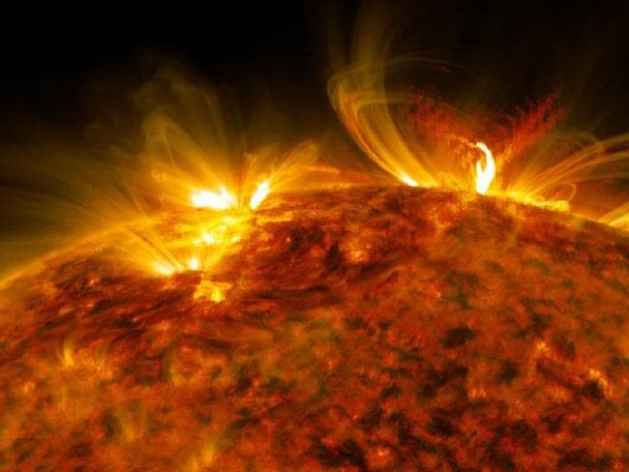Geomagnetic storm caused by ‘cracks’ in the planet’s magnetic field set to hit Earth today & tomorrow ~ March 14, 2018
Posted on March 14, 2018 by cindyloucbpNews.com.au
AN INCREASE in geomagnetic activity has some experts concerned that the solar storm expected to hit Earth tomorrow could wreak havoc — but is it that big a deal?In the past, large-scale geomagnetic events have disrupted communication satellites and caused blackouts.
According to The Sun, this latest magnetic storm is being described as “minor” by the US National Oceanic and Atmospheric Administration (NOAA), the NOAA has issued a storm warning via Twitter saying that the storm will be in effect today and tomorrow.
“Enhancements in the solar wind” are expected to cause “escalated geomagnetic responses.”A G1 Watch is in effect for the 14 & 15 March, 2018 UTC-days. Enhancements in the solar wind due to the anticipated effects of a coronal hole high speed stream (CH HSS) are expected to cause the escalated geomagnetic responses. Visit https://t.co/dimAHi8BFd for the latest info. pic.twitter.com/doJIzMWaGe
— NOAA Space Weather (@NWSSWPC) March 12, 2018
The magnetic storm was created last week by an explosion in the Sun’s atmosphere known as a solar flare, which caused charged particles from the flare to make their way to Earth.

The entire Earth-facing side of the sun erupted in a tumult of activity on August 1, 2010. Picture: AFP/NASASource:AFP

A model of the sun with surface activity and solar flares. Picture: SuppliedSource:Getty Images
The storm’s arrival coincides with the formation of ‘equinox cracks’ in the Earth’s magnetic field, which form around the equinoxes on March 20 and September 23 every year.
Geomagnetic storms are rated on a scale of G1 to G5, with the latter being the most extreme.

Solar flare flashes in the edge of the Sun captured on September 10, 2017. Picture: NASA/GSFC/SDOSource:Supplied
At their most extreme, geomagnetic storms have been known to cripple satellites and cause massive blackouts.
The strongest geomagnetic storm on record is the Carrington Event in 1859, named after British astronomer Richard Carrington, which electrified telegraph lines and shocked technicians, setting their papers on fire — it was visible as far as Cuba and Hawaii.
A solar flare that erupted on August 4, 1972, knocked out long-distance communication across some US states, according to NASA.
In March 1989, a powerful geomagnetic storm set off a blackout in Canada that left six million people without electricity for nine hours.

Northern Lights pictured on March 9, 2018, in Utakleiv, northern Norway. Picture: AFP Photo/Oliver MorinSource:AFP
A benefit of solar flares can be enhanced auroras or natural light displays such as the Northern Lights seen in the countries of the Arctic Circle.
There will be a minor uptick in geomagnetic activity over the coming days, resulting in a G1 geostorm — an event that happens around 2,000 times every 11 years.
This article first appeared in The Sun and is republished with permission.
Thanks to: https://roserambles.org






 Sat Mar 23, 2024 11:33 pm by globalturbo
Sat Mar 23, 2024 11:33 pm by globalturbo


